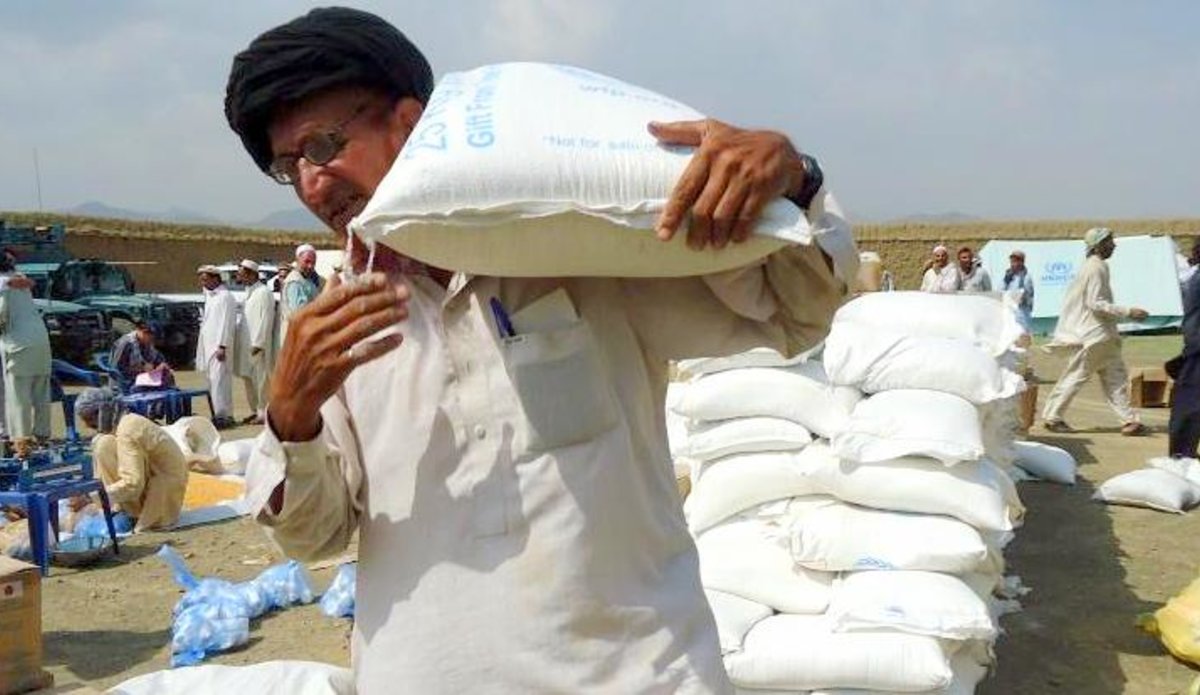Spikes in conflict-related humanitarian need expected in 2016
KABUL - The humanitarian community in Afghanistan is likely to be called upon in 2016 to redouble efforts made last year to provide life-saving assistance said the Humanitarian Coordinator, Mark Bowden.
In a message published in the latest OCHA Afghanistan Humanitarian Bulletin, Mr. Bowden -- who is also the UN Secretary-General’s Deputy Special Representative for Afghanistan – said that he expects to see conflict-related spikes in humanitarian need during 2016.
“I look back with admiration on the tireless efforts that the humanitarian community have made in 2015. However, I have no doubt that we will be called upon to redouble those efforts and deliver ever increasing levels of assistance to those in need of life saving humanitarian response over the next 12 months,” said Mr. Bowden.
“The need for a flexible and fast funding response and humanitarian reserves that can be mobilized rapidly will characterize the needs in 2016,” said Mr. Bowden, noting that Afghanistan remains in a protracted crisis with the impact of the conflict continuing to increasingly affect civilians.
An estimated 6.3 million Afghans have been affected by the widespread conflict and displacement that is occurring at a rapid pace, with an estimated 200,000 people displaced during 2015, marking a 64 per cent increase over 2014.
Since the handover of security to Afghan security forces at the end of 2014, there has been a rise in the level of violence in Afghanistan. UNAMA’s 2015 Midyear Report on Protection of Civilians in Armed Conflict, issued in August, documented 4,921 civilian casualties in the first half of 2015 -- a one per cent increase in total civilian casualties compared to the same period in 2014.
“Conflict within urban areas has increased and is demonstrated by the fact that in 2015, 23 district administrative centres as well as the city of Kunduz fell to Taliban forces for a period of time; in 2014, by comparison, only three district administrative centres were briefly overrun.”
Afghanistan also remains prone to natural disasters, which contributes to humanitarian needs: “Recurring annual floods displace people every year and the powerful 2015 earthquake that struck Badakhshan Province left an estimated 130,000 people in need of some form of humanitarian assistance,” said Mr. Bowden.
“The UN was able to provide non-food items and immediate support to the displaced [last year] due to availability of both adequate contingency stocks and financial mechanisms to provide rapid assistance,” said Mr. Bowden.
“We will need to be prepared for the same sort of situation to occur in 2016, which is why the Common Humanitarian Fund (CHF) is critical to our response. This funding mechanism enables the humanitarian community to respond nimbly to meet the needs of any large scale displacement that takes place.”
Mr. Bowden said that despite the rising levels and geographic spread of violence in Afghanistan, 2015 was characterized by an overall improvement in the ability to provide humanitarian aid to those in need. Parties to the conflict have shown a better understanding of the need to respect humanitarian laws.
“A clear example of this is that in 2015 the Taliban, for the first time ever, made a statement requesting a unilateral ceasefire to allow earthquake assistance to reach the people in need,” said Mr. Bowden.
“While this development is promising, the airstrike on a MSF trauma centre in Kunduz Province that killed as many as 30 MSF staff members and patients is absolutely unacceptable. It underscores the vital need to ensure that the protection of health staff, health facilities and patients in conflict, determined by International Humanitarian Law, be respected.”
Mr. Bowden said that in 2016 the UN will look to address migration issues, especially the number of returnees to Afghanistan.
“The increasing rate of migration out of Afghanistan, most notably to Europe, has been driven by a combination of economic circumstances, in a country where the economy has shown low levels of growth, as well as population displacement from rural areas and urbanization.”
 UN
UN







